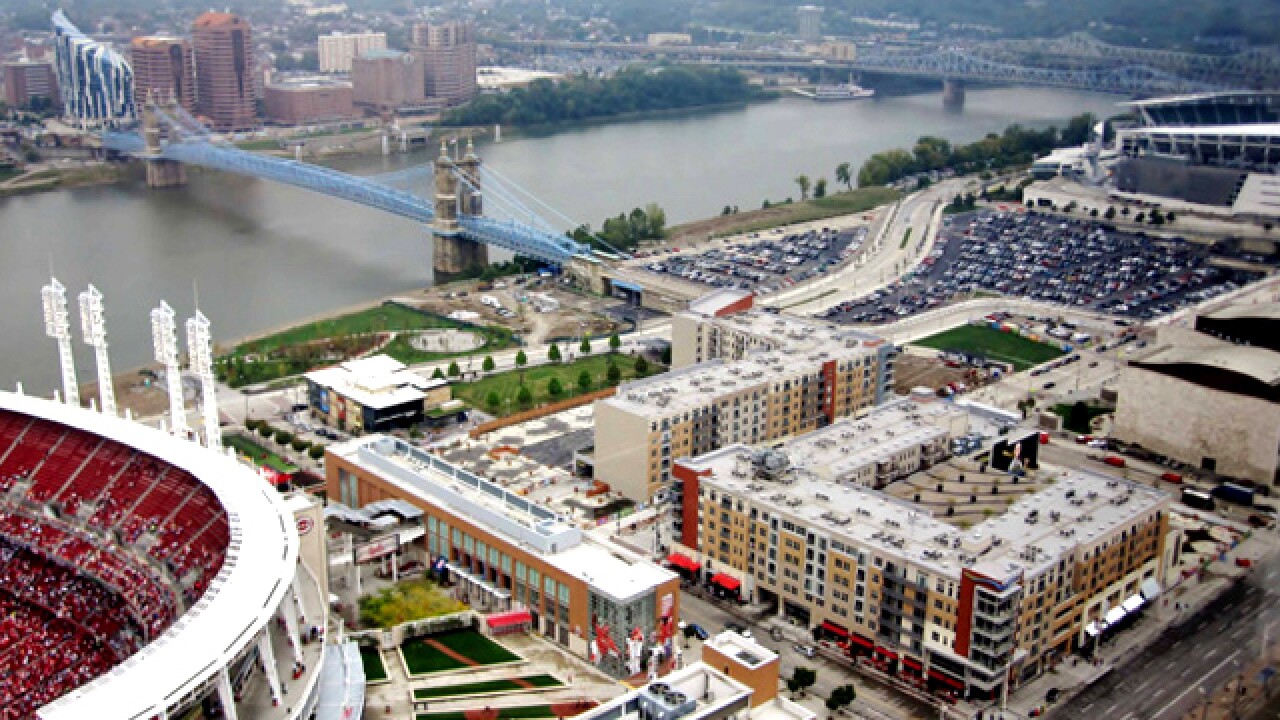CINCINNATI — A Monday meeting of City Council’s Budget and Finance Committee shed more light on the resurrected (and still byzantine) legal feud between city and county officials involved in developing the Banks.
But even attendees seemed occasionally baffled by the overlapping grievances, contracts and expectations. Councilman P.G. Sittenfeld said he felt as though he were attempting to track “multiple games of tennis” at the same time.
The short version: The meeting ended with the unanimous adoption of a motion that would enable the city to move forward with development of a riverside park sans Hamilton County’s input or approval.
Here’s the long version.
A FEW DAYS EARLIER: Commissioner accuses mayor of 'playing games' with Banks development
By the end of Monday’s meeting, both the council and the Hamilton County Board of Commissioners had accused one-another of changing the terms of a late-2019 agreement meant to definitively parcel out pieces of riverfront land near Paul Brown Stadium — some for the city, some for the county, all in service of clearing the way for a long-anticipated concert venue.
The drama preceding the agreement lasted more than a year. Mostly, it came down to parking space.
The Bengals’ contract with Hamilton County guarantees a certain amount of it for tailgating fans. If Cincinnati wanted to turn existing parking space into a music venue, it would need to provide a new space for tailgaters to go.
FROM 2018: City leaders worry the Bengals will veto The Banks concert venue
FROM 2019: City Council tells Bengals to back off, votes to stall Banks concert venue deal
A game of political, geographical Tetris ensued. Eventually, a nearby construction materials company called Hilltop Resources agreed to relocate, providing enough space for all parties involved.
Dec. 3 was supposed to be the end of it, according to City Manager Paula Boggs Muething. Following a November meeting between Mayor John Cranley and Commissioner Todd Portune, officials finalized the arrangement by agreeing to give the city full development rights over two undeveloped lots on which the county had planned to build parking garages. The county would, in return, get two nearby lots to develop to its own specifications.
Portune died in late January.
Around the same time, according to Cranley, things started to change. The county didn’t want to give up its parking garages after all, he said.
“There would be meetings where there would be a meeting of the minds, a document would be sent explaining, yes, we were all in agreement on this, and then we would get a mystery document 6-8 weeks later, totally different than what was negotiated,” Cranley said Monday. “And so it’s been bad faith.”
Cranley and Boggs Muething both said the county refused to formally concede the city’s two undeveloped lots and began pushing for a larger role in other Banks development.
The example that took up most of Monday’s discussion: A park adjacent to the forthcoming music venue.
According to Boggs Muething, the county communicated its hopes that it would be given control over the park’s design and creation despite not owning the final product and providing no money to fund it.
The city of Cincinnati will foot most of the multi-million-dollar bill for the project, according to Cranley. MEMI, the developer of the music venue, will supply $1.4 million. The county isn’t on the hook for anything.
It is also legally required to hand over the future park’s lot space when the county requests it, according to Boggs Muething.
However, Cranley said, county officials continue to ask for control of the park and resist the terms of his 2019 agreement with Portune.
“At a big picture level, my heart is broken that the deal that the late Commissioner Portune and I struck has been renounced by the county,” Cranley said. “… However, as heartbroken as I am, we are where we are. What do we do?”
Council unanimously passed a motion declaring the city’s intention to “take all steps necessary to ensure the swift commencement of construction of the City-owned park,” including negotiating with the county, revisiting contracts the county had already made with outside contractors, and taking the park construction project on itself.
Cranley repeatedly claimed the county’s alleged intransigence was an attempt to protect itself from the consequences of not providing enough parking spaces for the Bengals.
Sittenfeld, silent for much of the discussion, voted yes on the motion but also suggested scheduling a meeting that would put city and county officials in the same room to transparently discuss their ongoing dispute.
Cranley agreed it was a good idea.
Councilman Greg Landsman made a suggestion of his own: “If the county moves forward without us and expects our money, I would ask that the administration say no, that we can’t do that.”
Cranley agreed that was a good idea, too.


